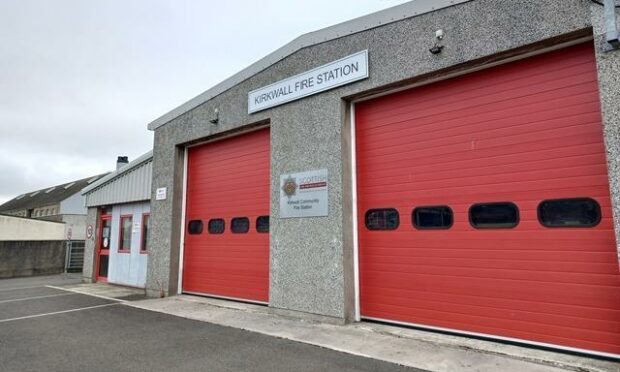Would the Scottish Fire and Rescue Service (SRFS) re-think the training requirements to help ease the low staffing issues it has in some of Orkney’s islands?
That was the question from councillor for the county’s north isles Melissa Thomson.
She posed the question during a meeting of the local authority’s Police and Fire sub-committee this week.
The reply from the fire service was that nothing is off the table.
Some fire stations in Orkney are meeting their full staffing compliment, or are very close, such as the stations in Stromness, Kirkwall, and Westray.
However, others aren’t faring so well.
The stations in Hoy, Eday, and North Ronaldsay are each seven staff members short of fulfilling their full compliment of twelve.
Recruitment troubles at Orkney fire stations continue
Other stations aren’t faring as badly, but are still short.
Papa Westray is five staff members behind, while Rousay still has six spaces to fill.
Sanday and Shapinsay are missing three and four members of staff, respectively.
This is according to the Scottish Fire and Rescue Service’s figures as of December last year. This is not a new issue for the service.
Councillor Thomson lives in Eday and asked, with the smaller islands communities “clearly struggling for numbers”, could a new approach be considered.
She said the Eday station is now down to four members of staff – one less than was in the SRFS’s report.
Councillor Thomson’s suggestion is that the stations have breathing apparatus (BA) qualified staff supported by a backup team who can drive or work a pump.
This would be opposed to having every member of the team at a station breathing apparatus qualified.
She said: “Surely that would provide the much-needed support and would help with the dwindling numbers they’ve got.
“It’s quite a lot to remain as a fully-qualified BA person on an island. Having spoken to staff, they’re looking for a system like that.
“In the past, we’ve always been told we definitely can’t do it and they all need to be fully BA trained.
Could a new approach solve the problem?
“It’s really difficult when you’ve got such a small population.”
The question was answered by Scott Gibson, the local senior officer for the Western Isles, Orkney, and Shetland.
While he said a certain standard of training had to be maintained, nothing was off the table.
He said: “With the new strategic plan that the SRFS has delivered, it does give me more autonomy to look at various options on the islands.
“We have a certain standard we have to achieve with our crews, with regard to wearing breathing apparatus and driving.
“But we wouldn’t put anything off the table, with regard to achieving a fully qualified crew.
“If that includes some kind of tiered process, we would look at that.”
Mr Gibson said there are other options that could also be looked at and have already been used.
This includes having staff in “rural full-time posts” that could temporarily fill an empty seat at Orkney fire stations.
He added: “It’s not something we’re going to solve overnight. It’s something that’s going to take time.
“I would assure you that I will be looking at all options. I won’t be putting anything off the table.”
Other figures that featured in the SRFS’s figures for the third quarter of the year include a rise in the number of road traffic collisions attended by the service.
This went up from one, between October and December of 2021, to six in the same period in 2022.
These six traffic collisions resulted in three casualties and one fatality.
For the year to date, between April and December, there was a rise in the number of false fire alarms. For 2021 this figure was 35, while it was 42 for April to December 2022.
The number of fires at non-domestic properties was also higher in 2022, at seven, compared to three the year before.

Conversation